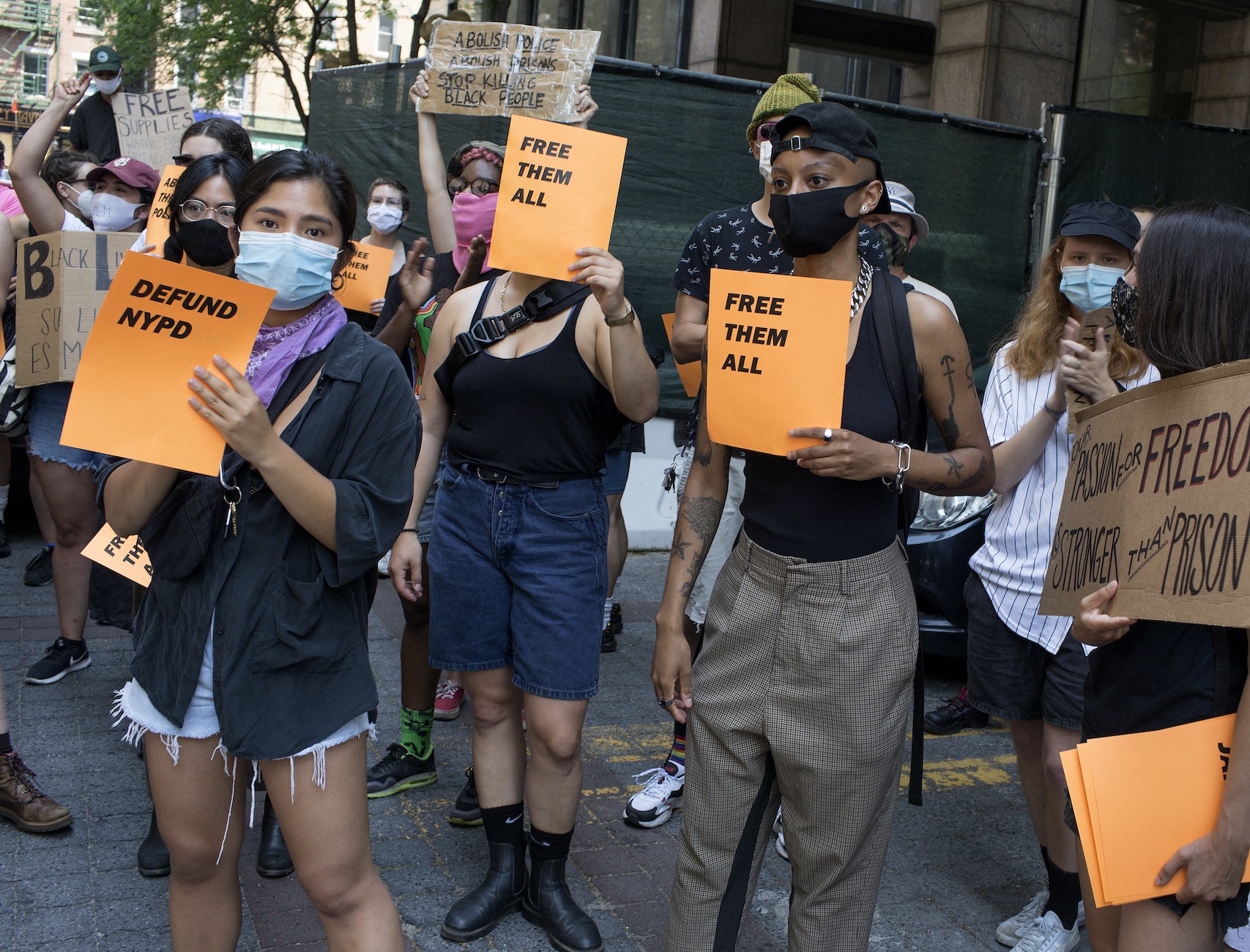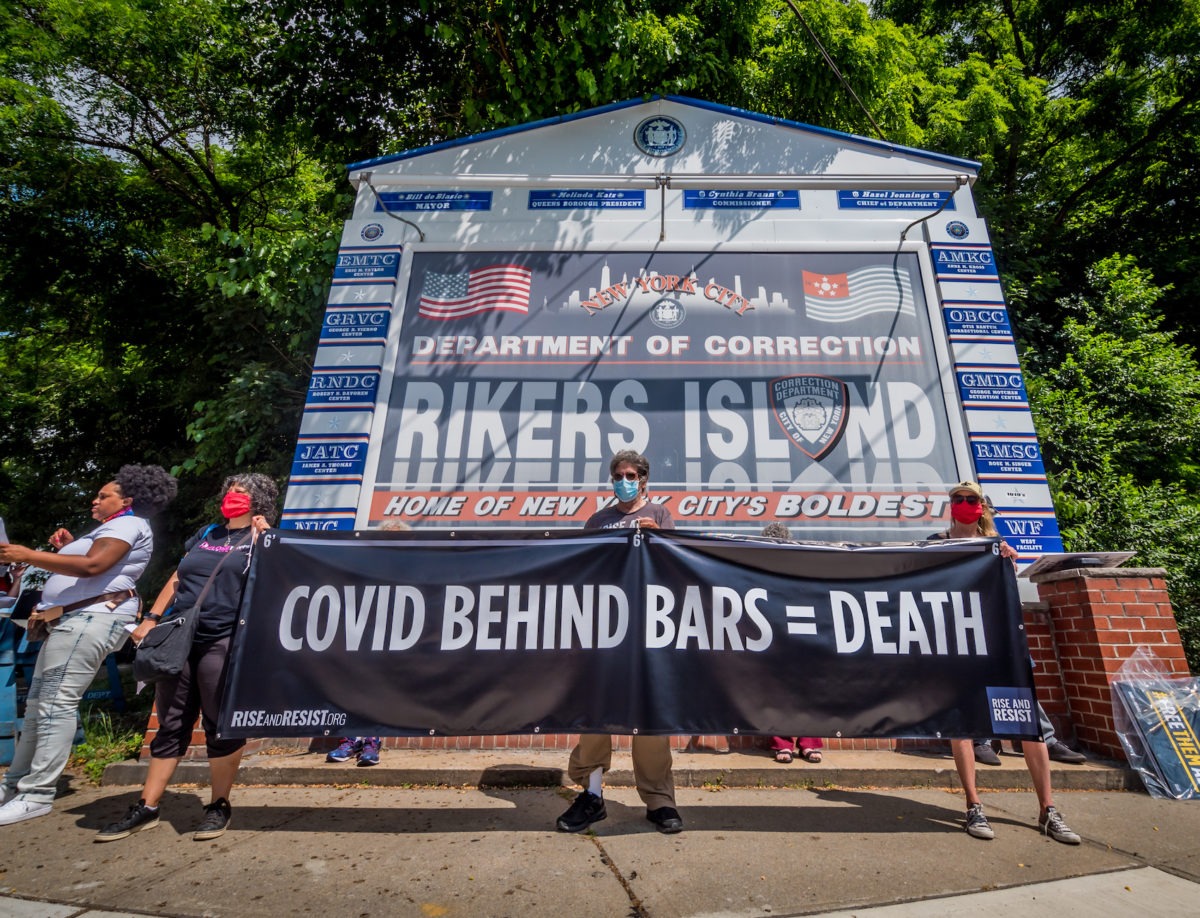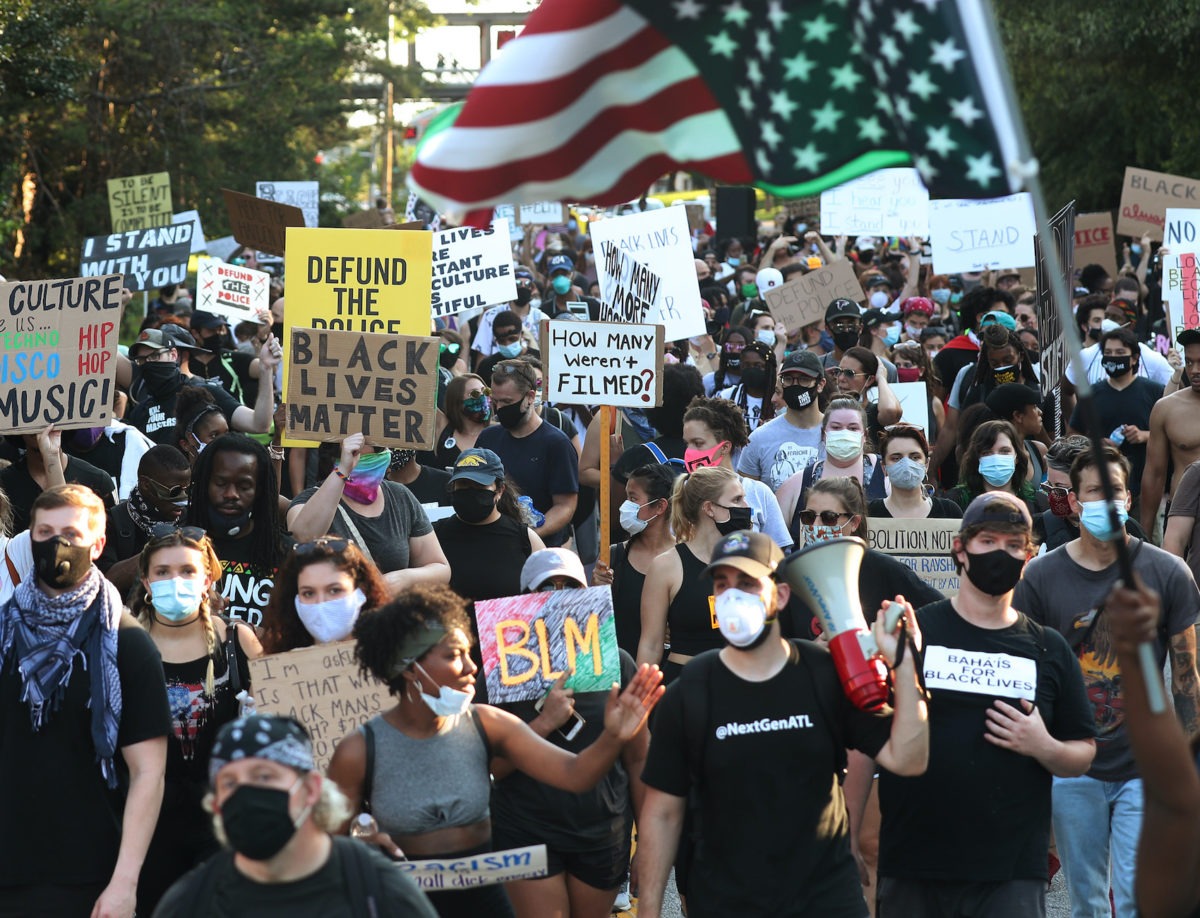How Prison Abolitionists Are Meeting The Moment
The COVID-19 pandemic and nationwide protests over police brutality are strengthening the case against mass incarceration, advocates argue.

The intersection of a pandemic and a public uprising to address police brutality has created a unique moment in history—and a distinct moment for prison abolitionists.
Two arguments now entering the mainstream—that incarceration is an urgent public health crisis and that policing takes needed resources from communities—have long been argued by abolitionist organizers.
“Abolition is about fighting the prison industrial complex as a whole, because these violent systems are interlocking and feed off each other,” explained Mohamed Shehk, national media and communications director for the abolitionist organization Critical Resistance.
“What’s become clear,” Shehk said, “is that the prioritization of policing that led to the killing of George Floyd, and the ongoing prioritization of imprisonment in this country, are the same reasons that our healthcare systems and communities were underequipped and underfunded to address the pandemic effectively.”
The greater movement is keenly aware of what Shehk called a “vast opening in the political horizon.” Organizers have shifted tactics with once local campaigns—like No New Jails NYC, a group that led the movement last year to close Rikers Island jail complex, without opening new borough-based jails—morphing into coalitions that are increasingly engaging the broader public.
Mon Mohapatra was a No New Jails NYC organizer and is now with Free Them All for Public Health, a coalition formed in light of COVID-19 that demands the immediate release of all people held in city jails who are over the age of 50, are jailed because of parole violations, are at high health risk, and have less than a year remaining on their sentences. Though the city has not met those demands, the number of people entering jails since mid-March declined compared to the same time last year, and the number leaving—3,400 people—was nearly twice the number entering. “The effect of this was a daily population decline of 1,480 people,” according to a city report published in late May.

Mohapatra said because the campaign to close Rikers had already organized a coalition, the same group was able to rapidly mobilize and expand into COVID-19 advocacy. Other campaigns around the country to shutter jails and prisons have similarly shifted gears in response to the pandemic.
Massachusetts nonprofit Families for Justice As Healing, founded by formerly and currently incarcerated women, shifted its prior organizing against a proposed women’s prison to coordinating with 30 organizations to demand that Governor Charlie Baker release incarcerated people as COVID-19 continues to spread. JusticeLA—which successfully fought the Los Angeles County jail expansion—joined over 40 advocacy groups on a set of demands for the county sheriff, district attorney, Superior Court, and Board of Supervisors.
The moment has not only expanded abolitionist campaigns; it has given them increased power to demand more. Mary Hooks, co-director of Southerners on New Ground, now running a campaign to end money bail and pretrial detention, said, “Demands we thought that couldn’t be met, could actually be met now, when we talk about freeing all of our folks and getting people out of jail.” With public pressure, the Fulton County district attorney’s office identified at least 300 people incarcerated in the county jail for release, though the office did not respond to The Appeal’s request for how many of those people were released. And when organizers got word that Fulton County Jail planned to use $23 million of federal COVID-19 relief funding to build COVID-19 isolation units, they held a rally outside the county’s headquarters that attracted media attention and at least 90 protesters. The county commissioners voted against the isolation unit in early June.
Across the country, authorities have released thousands of incarcerated people from jails. (Significantly fewer have been released from federal prisons, where the number of cases continue to rise.) Abolitionists argue the current reductions are not nearly enough as cases inside prisons continue to soar. In June, demands intensified for large-scale decarceration in response to findings that upward of 300,000 people were in some form of solitary confinement in response to COVID-19.
At California’s San Quentin State Prison, a significant outbreak of the disease and prisoner hunger strike in response to poor treatment has led organizers to demand that Governor Gavin Newsom go further than releasing prisoners within 180 days of their original release date.
And budget cuts in New York City could delay the planned closure of Rikers in January 2027, The Appeal reported last month. “The whole justification for building these jails—closing Rikers, getting people out of this horrible penal colony—is now moot,” Mohapatra said then.

As decarceration demands persist, so have demands to defund police, an abolitionist tenet. George Floyd’s murder at the hands of Minneapolis police in May was a tipping point in the movement’s organizing.
“With a health emergency on our hands, there was a realization that the police can’t keep us safe while the government fumbled its response,” Shehk noted. And much like the strengthening ties between public health and decarceration, there’s growing acknowledgment of law enforcement violence as a public health issue.
Abolishing police, said Shehk, had seen less mainstream traction than the movement to abolish prisons. “There’s been a more blatant and visible effort to legitimize police as people who serve the community,” he added. “That’s taken a whole media apparatus and propaganda machine fighting day in and day out to paint police as the good guys you call on when something’s wrong.”
In less than 24 hours, Mohapatra and a small team created #8toAbolition, an abolitionist framework countering the widely shared 8 Can’t Wait campaign that outlines eight police reforms aimed at reducing police violence. Quickly after the #8toAboltion framework’s launch in May, there were over 20 translations of it in the works, with some now available on the group’s site.
In New York City, Free Them All for Public Health contributed to recommendations to defund the NYPD “with no new jails and by closing Rikers now.” The Oakland, California, chapter of Critical Resistance started an assessment of policing there, with the goal of strengthening ongoing organizing around defunding the department. Its Portland, Oregon, chapter successfully pressured lawmakers to disband the anti-gang unit of the Portland Police Bureau. The city agreed to end its policing partnership with schools and transit police, and the City Council also voted to cut $15 million for the police budget. In June, Minneapolis Public Schools terminated its contract with the police department and the City Council unanimously passed a resolution intending to disband its police department and create a new model of public safety.
Abolitionists are not just responding to a moment. Organizers, and Black organizers in particular, have long been reimagining policing and incarceration.
“This work didn’t come out of nowhere,” organizer Mariame Kaba said in a June webinar that was co-hosted by Critical Resistance, Project NIA, Survived and Punished, Reclaim the Block, and Black Visions Collective. “There are people on the ground doing this work, tilling soil, so that when the rebellion came and when the spark was literally lit, there were already some things in place that people could mobilize and organize themselves around to push, further than they’ve ever been able to push before.”
In Minneapolis, groups like Reclaim the Block, MPD150, and Black Visions Collective were paving the way for the political shift the city is seeing now in response to Floyd’s murder. Back in 2017, MPD150 released a report outlining what the city could look like without police, addressing alternatives to policing for issues like violent crime and domestic violence. (The group will release a revamped report in coming weeks.) It is one of several abolitionist blueprints suddenly made relevant: No New Jails NYC released “Close Rikers NOW, We Keep Us Safe” last year, while JusticeLA’s successful organizing against county jail expansion pushed the county Board of Supervisors to create an Alternatives to Incarceration Work Group, which released its “Care First, Jails Last” report earlier this year.
“Most arguments against abolition are based on the idea that police vanish and there’s a wave of crime,” said MPD150 organizer Ricardo Levins Morales. “In this next period, the work not just of our group but many others will be to change that story in a much wider public than we’ve been able to reach so far.”
